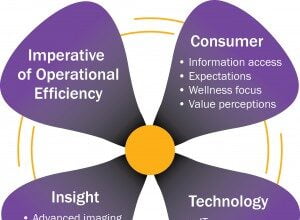Here is how most people approach the labor market: You search for a job you like, with health insurance tacked on as a fringe benefit.
But here is how other people approach the labor market: They search for the health insurance they need and agree to work in order to get it.
Here is how most people approach the labor market: You search for a job you like, with health insurance tacked on as a fringe benefit.
But here is how other people approach the labor market: They search for the health insurance they need and agree to work in order to get it.
I first became aware of this second type of person in conversations with a major retailer which discovered it had a person way over-qualified for the job working in the company mail room. The reason: the employee’s daughter required $500,000 a year of medical care — all paid for by the company’s generous health plan. (See a similar problem at Starbucks.)
It’s hard not to sympathize with a father who goes to great lengths to take care of his daughter. But, as I show below, there are far better ways to handle social problems like this one than turning employers into an extension of the welfare state.
Left a good job in the city,
Working for the man,
Every night and day.
Under federal law, employers are treated just like insurance companies: They can’t deny employment or health insurance to people on the grounds that they are likely to need a lot of medical care. Nor can they charge a higher premium to employees based on their health status.
Unfortunately, these regulations — which will only get worse under ObamaCare — are changing the relationship between employers and their employees. Whereas there once was a time when we could count on our employers to be our protectors and defenders with respect to the health care system, under the new regime our employer has a financial interest in throwing us to the wolves if we have the misfortune to become seriously ill.
With the current regulations in place, for example, a rational employer has strong incentives to find every legal way possible to attract employees who are healthy and avoid those who are sick. And that’s just what they appear to be doing.
A PricewaterhouseCooper study finds that 73% of employers offer wellness programs. Of those with more than 5,000 workers, 88% did. But why offer wellness benefits? If they are not targeted at the minority of employees with a serious need to change their lifestyles, such programs cannot possibly pay for themselves. Preventive medicine may be a wise investment for the individual. But it rarely reduces overall health care costs for an employer.
A more likely motive is to create a culture of healthy living. Such a culture is likely to attract new employees who are …. well…. healthy. (People who smoke, are overweight and out of shape do not fit in well with people who work out in the gym every day.)
Apparently no company wants to admit this not so subtle goal. The politically correct position is that the company is trying to encourage everyone to be healthier. But what difference does the motive really make if the end result is the same? Controlling health care costs by hiring workers who are healthier-than-average to begin with will beat any managed care technique known to man.
Moreover, discriminating in favor of the healthy and discriminating against the sick are just two sides of the same coin. As The Economist noted the other day:
A growing number of Healthways’s clients want to use sticks as well as carrots…. At Safeway, a grocery chain, the premium that employees pay for their health insurance falls if they keep their weight and cholesterol under control. In other words, the unhealthy are penalized. GE first offered incentives to employees who stopped smoking; now those who still smoke must pay $650 more for their health insurance. Companies may be nudging now, but in future they may shove.
Another technique employers are using is to make their overall structure of benefits increasingly less attractive to people with expensive health problems. A typical employer plan these days, for example, will provide first-dollar coverage for checkups and preventive care (expenses most employees could have easily paid out of pocket), but leave employees vulnerable for a large share of catastrophic costs. As Julie Rovner pointed out in USA Today recently:
To try to control spending, some employers are requiring patients to pay a percentage of the cost of specialty drugs — from 25% to 33% or more — rather than a flat dollar co-payment. Surveys show that 13% to 17% of employers have added a “specialty” category to their drug benefits, and more are likely to adopt them, given that more than 600 specialty drugs are in development.
These costs can total tens of thousands of dollars in out-of-pocket spending for unsuspecting cancer patients. And they do more than just shift costs to employees. They encourage prospective employees with a health problem to look for work elsewhere.
Increasingly, the type of health plans employers have defies all of the traditional principles of rational insurance: letting people pay out of their own pockets for the expenses they can afford, but protecting them against catastrophic costs they cannot afford.
Here is the sad bottom line: perverse incentives created by federal regulations are destroying the relationship between employees and their employers as well as any possibility of obtaining the kind of health insurance most people want and need.
What is the right public policy? Allowing employers to contribute to employee-owned, personal and portable insurance that workers take with them as they go from job to job and in and out of the labor market is a start. I’ll write more about this in the future.






